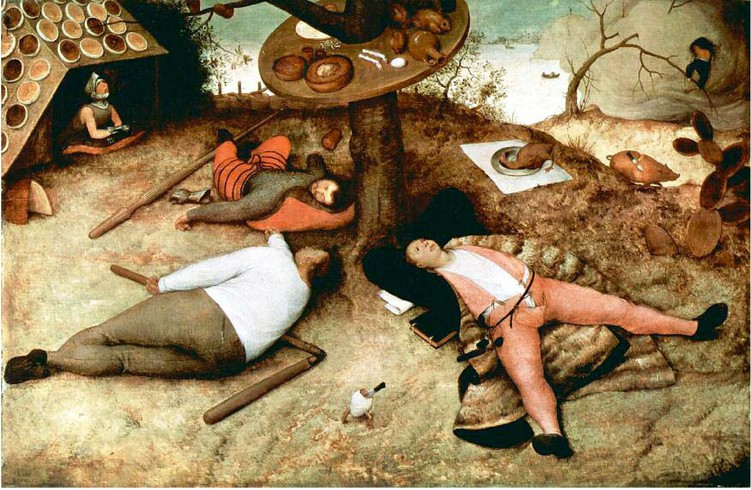“LIFE WAS GOOD FOR OUR PALEOLITHIC GRANDparents,” recounts a 2001 diet book.1 A 2013 diet laments that civilization has “transformed healthy and vital people free of chronic diseases into sick, fat, and unhappy people.”2 If everyone went Paleo, one dieter interviewed for this article explained, “the world would be a more beautiful, healthier place, and we all would be more healthy, better people.”3

Figure 1—The Land of Cockaigne (1567) by Flemish artist Pieter Bruegel the Elder.
An estimated three million Americans currently follow some version of the Paleo diet, and Paleo books are among the bestselling titles within an already blockbuster genre.4 At its most basic, Paleo diets reject agricultural products such as cereals and sugars for foods that could have been hunted or gathered—mostly high-fat, high-fiber meats and plants. In practice, “going Paleo” means everything from the ordinary to the outlandish.5 On the latter end of the spectrum, some dieters avoid artificial light, eat raw beef, forsake shoes, practice bloodletting, engage in polyamorous sexual relationships, and “adopt a primal attitude,” whatever that means.6 For others, the diet is just that: a diet of mainly meat and vegetables (occasionally fruits and legumes) adopted to lose weight or gain muscle. Most dieters practice Paleo to lose weight, but this “species-appropriate diet” allegedly cures more than a hundred ailments, ranging from Alzheimer’s to anxiety, epilepsy to acne.7